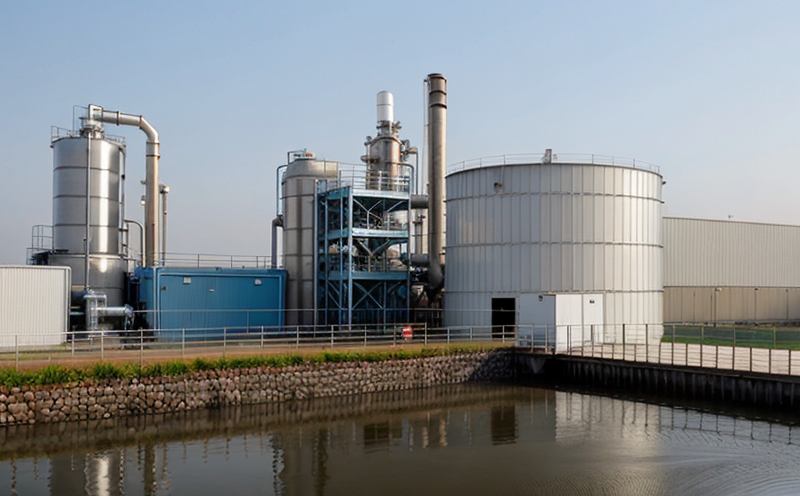DIN 38412 Toxicity Testing in Industrial Wastewater
The DIN 38412 toxicity test is a standardized method used to determine the acute toxicity of industrial wastewater on aquatic organisms. This test is crucial for ensuring that effluents from industrial facilities meet stringent environmental protection standards set forth by regulatory bodies.
At its core, this testing evaluates how toxic an industrial wastewater sample might be when released into natural water bodies. The test uses a small volume of the wastewater and exposes it to fish or other aquatic organisms over a short period (typically 48 hours). The results provide insight into the potential harm that could occur if such water were discharged into rivers, lakes, or oceans.
Understanding this testing is critical for industries involved in manufacturing processes where chemicals, solvents, and other hazardous substances are used. By performing DIN 38412 toxicity tests, companies can ensure they adhere to legal requirements while also minimizing their environmental footprint. This method helps in identifying any potential risks associated with the discharge of industrial wastewater into aquatic environments.
The DIN 38412 test is not just a compliance measure; it's an integral part of sustainable manufacturing practices. It allows companies to make informed decisions about process improvements and material substitutions that could reduce environmental impact. Furthermore, this testing ensures that any new products or processes introduced do not inadvertently introduce harmful substances into the environment.
For industries such as pharmaceuticals, petrochemicals, and electronics, where wastewater can contain complex mixtures of organic compounds, heavy metals, and other pollutants, DIN 38412 toxicity testing provides a robust framework for assessing risks. The test's standardized nature ensures consistency across different facilities and geographic locations, making it easier to compare data and implement best practices globally.
In summary, DIN 38412 toxicity testing is an essential tool in the continuous improvement of industrial wastewater management. It promotes compliance with environmental regulations while fostering a culture of sustainability within manufacturing environments.
Why It Matters
The importance of DIN 38412 toxicity testing cannot be overstated, especially in the context of industrial water and wastewater management. This test is pivotal for several reasons:
Ensures compliance with environmental regulations.
Protects aquatic ecosystems from potential harm.
Facilitates sustainable manufacturing practices.
Reduces the risk of legal penalties and fines associated with non-compliance.
Promotes responsible use of resources by identifying harmful substances in wastewater.
The results of DIN 38412 toxicity tests provide valuable insights into the potential impacts of industrial discharges on aquatic life. By understanding these risks, companies can take proactive measures to mitigate them, thereby reducing their environmental footprint and contributing positively to sustainability goals.
Industry Applications
| Industry Sector | Description of Application |
|---|---|
| Petrochemicals | DIN 38412 testing is used to assess the toxicity of effluents from refining and chemical production processes. |
| Pharmaceuticals | This test evaluates the impact of drug manufacturing waste on aquatic life, ensuring compliance with stringent environmental standards. |
| Electronics | Determines the toxicity of wastewater from semiconductor fabrication plants to protect local water bodies. |
| Paper and Pulp | Aids in assessing the environmental impact of wood pulping and paper manufacturing processes. |
The DIN 38412 test is particularly relevant for industries that generate significant amounts of wastewater containing complex chemical compounds. By identifying toxic substances early on, these companies can implement targeted remediation strategies to minimize harm to aquatic ecosystems.
Quality and Reliability Assurance
Consistent sample preparation ensures accurate results.
Use of standardized test organisms guarantees reliability across different facilities.
Regular calibration of testing equipment maintains precision over time.
Comprehensive reporting provides detailed insights into wastewater toxicity.
Quality assurance in DIN 38412 testing involves meticulous sample handling and preparation, precise organism selection, and rigorous adherence to the standardized protocol. These measures ensure that each test yields reliable results, which are crucial for making informed decisions about process improvements and compliance strategies.





